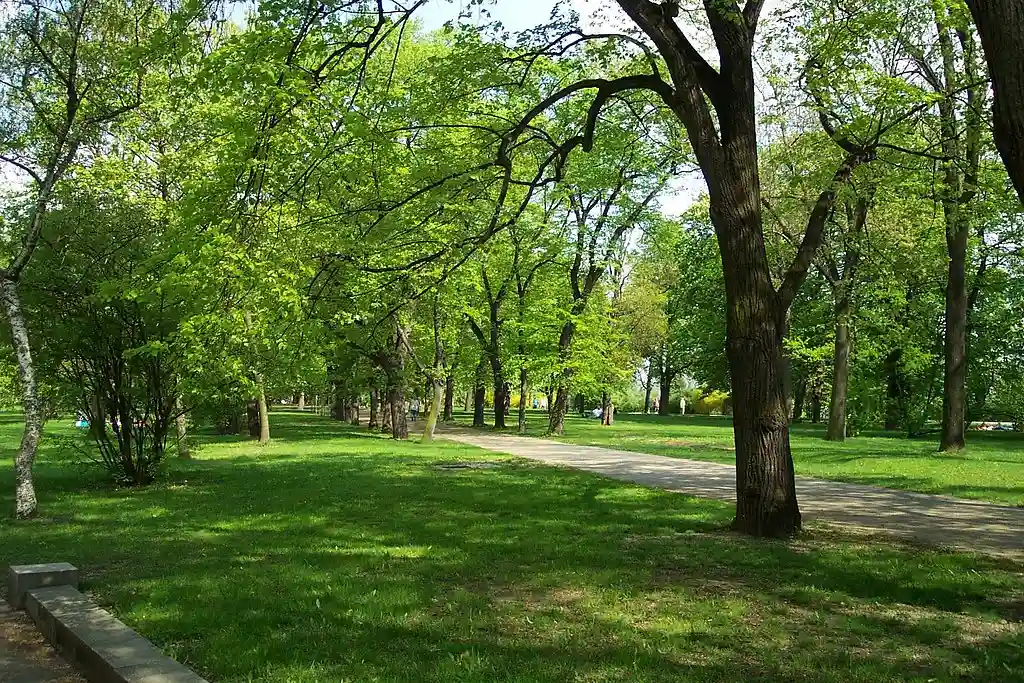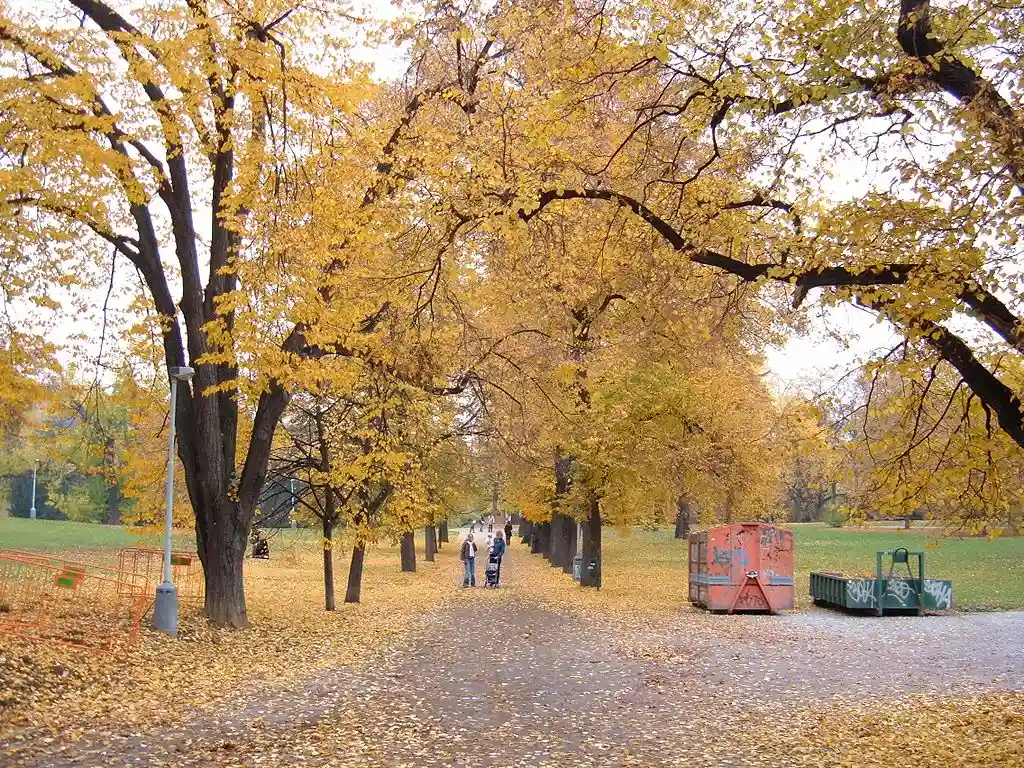Perched on a plateau overlooking the Vltava River, Letna Park stretches like a verdant balcony across Prague’s skyline, offering what many consider the most breathtaking panorama of the city’s historic center.
This 25-hectare expanse of rolling lawns, tree-lined promenades, and open meadows provides a peaceful escape from urban life while simultaneously celebrating its connection to the city below.
As visitors stroll along its paths, Old Town’s red rooftops, Prague Castle’s silhouette, and the graceful spans of Vltava bridges unfold in a living postcard that has inspired painters and photographers for generations.

From Royal Hunting Grounds to Public Sanctuary
Letna’s history stretches back centuries, beginning as a royal hunting ground beyond the city walls. Its strategic high ground made it a military encampment site during various conflicts, most notably in 1741 when French troops used it as a base during the War of Austrian Succession.
By the 19th century, as Prague expanded, urban planners recognized Letna’s potential as public greenspace, gradually transforming it into a landscaped park.
The park’s design evolved significantly in the late 19th century when the area was integrated into Prague’s urban planning. Formal tree-lined promenades were established, creating the elegant character that still defines much of the park today.
The famous Letna Plane—a vast open meadow at the park’s heart—was preserved, providing space for public gatherings that would later prove historically significant.
Join an Electric Trike Viewpoints Tour that includes Letna Park >>
The Changing Symbol of Letna Park: From Stalin to Metronome
Letna Park’s most dramatic historical chapter revolves around the massive monument that once dominated its central plateau. In 1955, the world’s largest statue of Stalin was unveiled here—a 15.5-meter granite colossus featuring the Soviet leader standing at the head of a line of workers and soldiers. This imposing monument, nicknamed “The Meat Queue” by Prague residents, stood as a potent symbol of communist power.
Following de-Stalinization, the monument became an embarrassment to authorities and was dramatically demolished with 800 kilograms of explosives in 1962. For decades after, only the empty plinth remained as a silent reminder of ideological shifts.
In 1991, after the Velvet Revolution, artist David Černý temporarily placed a pink tank here (originally a Soviet liberation monument he had controversially painted) as commentary on the changing political landscape.
Since 1991, a giant kinetic sculpture of a metronome has occupied the former Stalin site. This 23-meter moving installation, titled “Time Machine,” serves as a contemplative symbol of Prague’s forward movement through time while acknowledging the weight of its past. The metronome’s steady rhythm marks both constancy and change—a fitting monument for a city perpetually balancing tradition and progress.

Cultural Hub: From Beer Gardens to Skateboarding
Today’s Letna thrives as a cultural and recreational center. The park’s beloved beer garden, shaded by chestnut trees, draws locals and visitors alike to enjoy Czech pilsner with incomparable views. On summer evenings, hundreds gather as golden light bathes the city below, creating a community atmosphere that epitomizes Prague’s outdoor social culture.
The park has embraced contemporary recreation while maintaining its historic character. The Letna Plain hosts everything from circuses to music festivals, while Prague’s skateboarding community has adopted the smooth concrete beneath the metronome as their unofficial headquarters. Street art flourishes in this area, creating an ever-changing open-air gallery that contrasts with the park’s classical elements.
Sports enthusiasts appreciate Letna’s extensive jogging paths, fitness stations, and the newly renovated playground that blends creative design with safety features. Chess players gather at stone tables, continuing a tradition decades old, while nearby, modern slackliners practice between trees—a juxtaposition that perfectly captures the park’s blending of traditional and contemporary uses.
Join an Electric Trike Viewpoints Tour that includes Letna Park >>
Architectural Treasures Within and Around Letna Park
The park houses several architectural gems worth exploring. The Letenský zámeček (Letna Chateau), a neo-Renaissance building from 1863, now houses a restaurant with garden seating. Nearby stands the Hanavský Pavilion, a cast-iron structure originally built for the Jubilee Exhibition of 1891 and later relocated to Letna, where it now operates as an upscale restaurant with spectacular views.
At the park’s northern edge, the National Technical Museum and National Agricultural Museum offer cultural experiences in impressive functionalist buildings. The modernist Expo 58 building—Prague’s pavilion from the Brussels World Expo—found its permanent home near the park after representing Czechoslovak design excellence internationally.
Seasonal Delights for Every Visitor
Each season transforms Letna in unique ways. Spring brings blossoming trees and the first outdoor cultural events of the year. Summer sees the park at its most vibrant, with the beer garden in full swing and outdoor yoga classes on the lawns at dawn. Autumn paints the abundant trees in blazing colors, creating a photographer’s paradise against the backdrop of Prague’s spires. Winter offers serene, sometimes snow-covered vistas and the magical experience of seeing Prague’s Christmas lights from above.
For visitors, Letna offers multiple entry points, with the most dramatic approach being the monumental staircase ascending from Čechův Bridge. Those seeking a gentler climb can take tram lines to stops surrounding the park or approach through the elegant residential district of Letna from Holešovice.
As Czech writer Bohumil Hrabal, who often walked these paths, once reflected: “In Letna Park, Prague reveals itself not just to your eyes but to your soul. Here, above the river that has shaped the city’s destiny, you understand that Prague isn’t merely a place on a map—it’s a feeling suspended between earth and sky, between history and possibility.”
